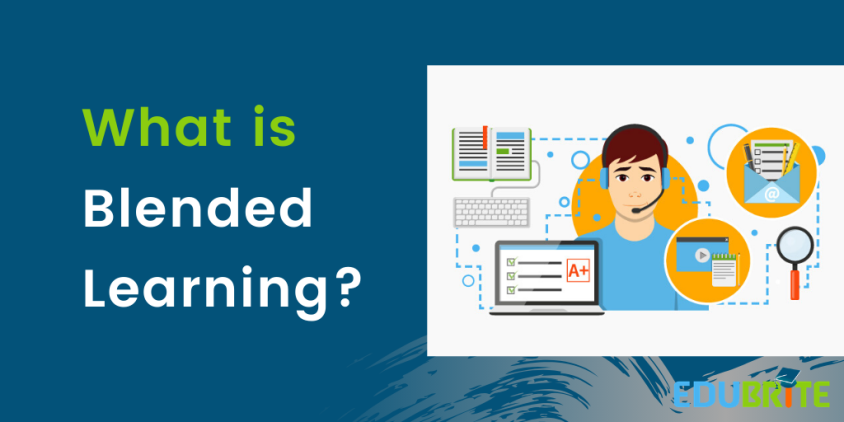What is Blended Learning?
Blended learning refers to a hybrid and integrated form of learning. While the exact definition and delivery approaches may vary from person to person, blended learning in general includes a combination of independent learning and instructor led methods.
Blended learning involves two or more of the following components:
- Instructor Led Training (ILT): In-person classroom activities attended by students
- Virtual Instructor Led Training (VILT): Online training sessions attended by students remotely
- eLearning/Self-paced learning: Online learning materials, such as pre-recorded lectures given by a trained facilitator; and
- Offline activities: Independent study time guided and framed by the material in the training and skills developed during the live experiences.
Blended learning represents a shift in how trainers and participants experience learning. It redefines the roles for both – trainers take on the role of a facilitator, empowering participants to gain more control in how they learn. Blended learning enables a more intentional, meaningful, and purposeful approach to learning for participants.

What are the benefits of blended learning?
Blended learning is a balanced approach that allows you take the best of both approaches. Based on your organization and its learning needs, you can create the mix of e-learning and instructor-led training (ILT) that you think is right for you. No matter what the mix looks like, there are benefits to reap:
Flexibility. Learners gain more control of their learning experience. They can consume online modules, content, and independent study anytime, anywhere.
Social learning. Both classroom-based and online learning live sessions allow interaction among participants and the facilitator, making for a richer, more dynamic approach to learning.
Cost-effective. Remote and out-of-the-classroom learning means there’s less money to spend on travel, printed training materials, accommodations, and other costs associated with face-to-face interaction.
Meaningful learning experience. Blended learning enables various forms of teaching and learning methods that can include gamification, webinars, collaborative review of works, and more.
Ability to measure progress. The use of an LMS to deliver e-learning means that trainers are able to gather data on participants. Metrics could include how much time they spend within the course, how they are progressing, and how much of the content they are mastering.
What are some tips for implementing blended learning?
There are some things to consider when switching from purely in-person training to blended learning:
Make sure you have the right LMS in place for the trainer and the participants. Identify what their needs are, then choose an LMS provider that best meets those requirements. Learn more about choosing the LMS that’s right for you.
Know that content from a face-to-face interaction may not necessarily work in an online form. Based on the Needs Analysis, identify which content can be best consumed face-to-face and which can be more effective online.
Transition slowly from a traditional approach to hybrid. It will allow both the trainer and the participants to get used to the new form of learning. Facilitators and participants can identify what’s working and what’s not and what changes may need to be made.
With blended learning, you can strike a nice balance between various training approaches. This helps you optimize the learning experience for your participants leading to a better ROI on your training efforts.
Ready to take the leap? EduBrite makes it easy to implement blended learning with various features like course authoring tools, self-paced e-learning delivery (asynchronous), instructor-led (synchronous) trainings. Book a demo with us now.
